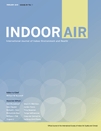Bacteriophage therapy relies upon viruses of bacteria to treat bacterial infections. Prior to penicillin’s discovery, bacteriophage therapy was one of the major ways to treat bacterial infections. Virologist Felix D’Herelle pioneered this method in the late 1800’s in Paris and the former Soviet Union. Most of the literature on bacteriophage therapy is from Eastern European countries, …
According to a 2012 Environment Canada report, electricity and buildings were responsible for 25% of Canada’s greenhouse gas emissions in 2010. Designing energy efficient buildings and retrofitting existing buildings to increase their energy efficiency is a growing concern for architects. However a recent article in Environment and Energy Publishing reiterates the need to consider the microbial environment in …
A just-published article by Desroches et al, “Extrolites of Wallemia sebi, a very common fungus in the built environment,”in the journal Indoor Air describes a previously unidentified metabolite of Wallemia sebi , a very common fungus in houses worldwide, although relatively more common in north temperate climates. The authors (including David Miller) write that it …
We’ve been hearing a lot about Microbes in Space. But what about Microbes in Smog? Here in California, we know a thing or two about smog. To avoid it during the drought, we have been having a lot of Spare the Air Days lately to try to protect our air quality and reduce the amount …
Just a quick link fest here. Lots of buzz going around about various microbiology of the built environment papers. Here are some news stories / blog posts of relevance: Brooke Borel at PopSci: Building Design Influences Bacterial Growth | Popular Science. Me on microBEnet: Studying — not wantonly killing — the microbes around us and the rise …
Imagine you have a camera with a special “anti-macro” lens. This lens scrubs from any image all plants and animals and other “macro” organisms. And this lens also highlights the remaining living things – the microorganisms – anywhere in the frame (including those that were in or on the macro organisms removed from the image). …
A recent investigation by the New York Times detailed here looked into water contamination levels of the rooftop water towers installed throughout New York City. The towers became common in the 1800s as buildings became to tall to allow for adequate water pressure. Even today the city’s water mains only provide enough pressure to reach the …
This recent article in Science Daily tells of a bacteria that “breathes” poisons, like antimony and arsenic. It also reduces contaminants, like selenium and tellurium, often found in wastewater from mines and refineries. Isolated from Mono Lake by researchers from the University of Georgia, this bacteria enjoys hot, high salt environments. Interesting implications of this bacteria’s …
Professor Jane Carlton, the director of the NYU Center for Genomics and Systems Biology, is leading a team of scientists to study the metagenome of New York City. They have begun a pilot study of the microbial populations on one dollar bills, and they have begun to sample different sewage lines in all five boroughs. In …
The human microbiome and microbes in space are two of the sexiest topics in microbiology today. Together they have attracted the attention of the J. Craig Venter Institute. Hernan Lorenzi is leading a team to study how the composition of the human microbiome changes during long term space exploration. They will be analyzing the microbiome of …
